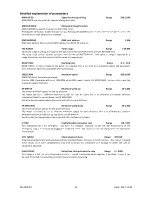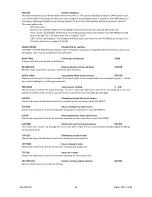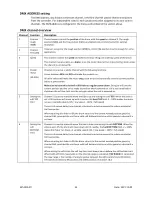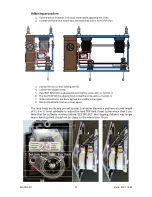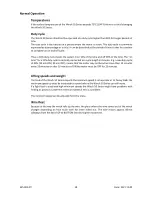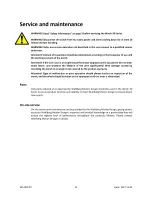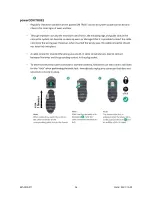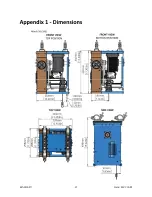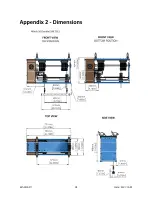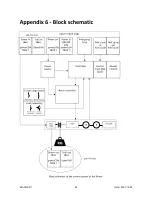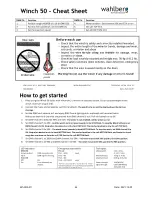
245.805.011
35
Date: 2021-12-09
Life of the wire
It is Wahlberg Motion Design policy to apply the strictest possible calibration procedures and use the
best quality materials available to ensure optimum performance and the longest possible component
lifetimes. However, wires are subject to wear and tear over the life of the product, resulting in special
attention to the state of the wire. The extent of wear and tear depends heavily on operating conditions
and environment, so it is impossible to specify precisely whether and to what extent the wire
performance will be affected.
The expected lifetime of the wire depends on the load and travel length as well as duty cycle.
Wire discard criteria
When the wire is exposed, the following guidelines can be used to control whether the wire must be
discarded. The following serves as guidelines and if any of the discard criteria are reached, the winch
must immediately be taken out of service, and the wire replaced, before using the winch again.
The wire should be discarded when:
When the overall diameter of the is reduced by 8 %, or the outer wires have lost its diameter by
33 % through wear. This reduction in diameter of the is measured on a portion of the which has
been subjected to abrasion and stresses with respect to the portion of the which is subjected to
stresses but not abrasion e.g. portions near drum or anchorage.
When there is evidence of considerable plastic wear or surface embrittlement.
When the diameter of the wire has suddenly reduced, or the lay length has suddenly increased
or decreased.
When there is evidence of severe corrosion like chain pitting.
When there is any evidence of internal corrosion in the rope. This can be recognized by slackness
of outer wires due to the internal wires corroding away.
When the wire has been subjected to mechanical damage, crushing, kink, bends, bird cage, etc.
When the core of the wire has collapsed.
When the wire has been subjected to a high temperature or heat due to fire.
When the wire has been subjected to severe shock load or overload due to an accident with the
winch.
Figure 2: When using a calliper to measure wire diameter, measure from crown to
crown, not from valley to valley.
Summary of Contents for 50 Series
Page 37: ...245 805 011 37 Date 2021 12 09 Winch 50 245...
Page 38: ...245 805 011 38 Date 2021 12 09 Winch 50 Double 246 701...
Page 39: ...245 805 011 39 Date 2021 12 09 Winch 50 Double Power and Cat5 246 704...
Page 40: ...245 805 011 40 Date 2021 12 09...
Page 41: ...245 805 011 41 Date 2021 12 09...
Page 43: ...245 805 011 43 Date 2021 12 09 This page is intentionally left blank...


